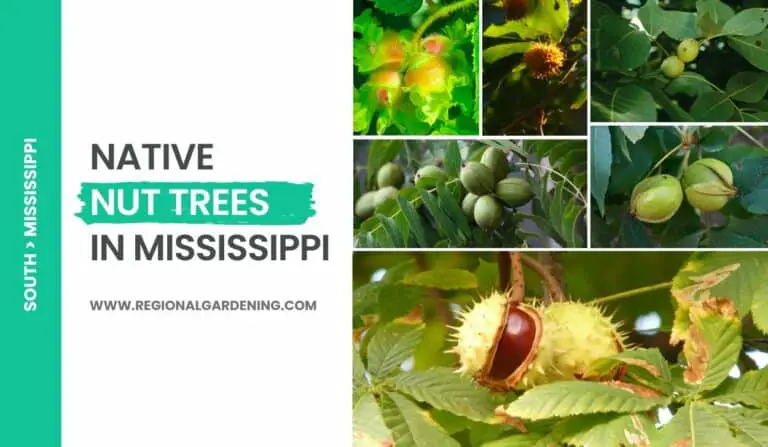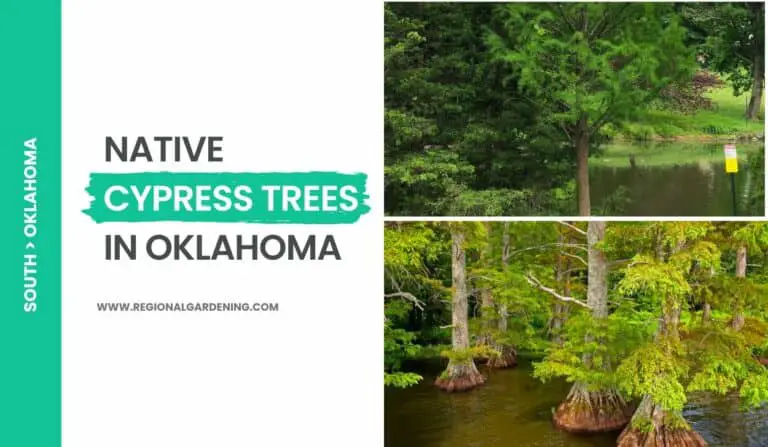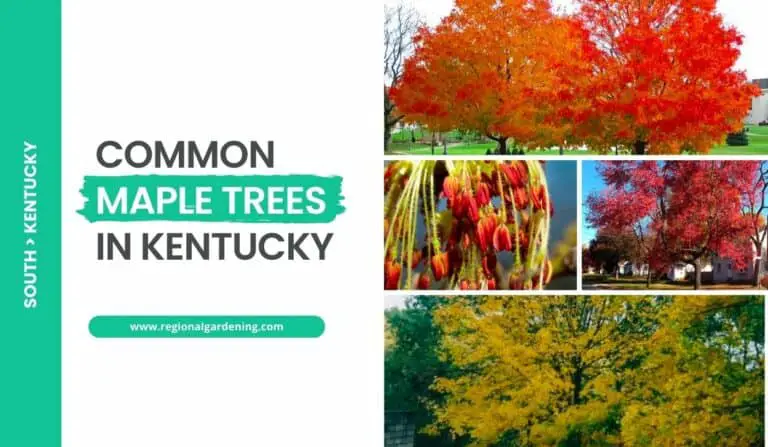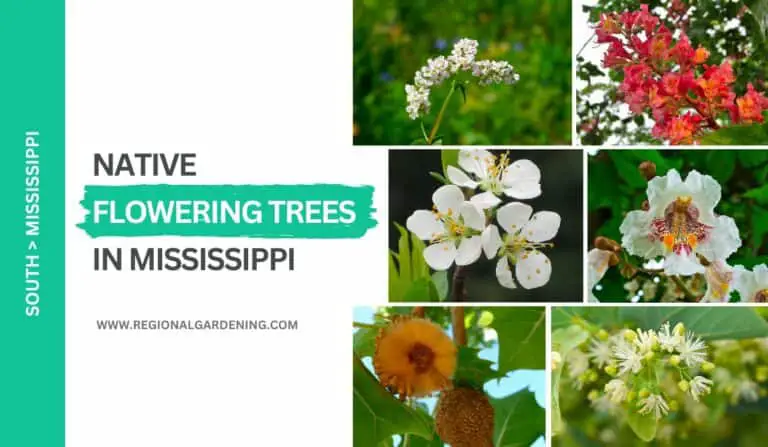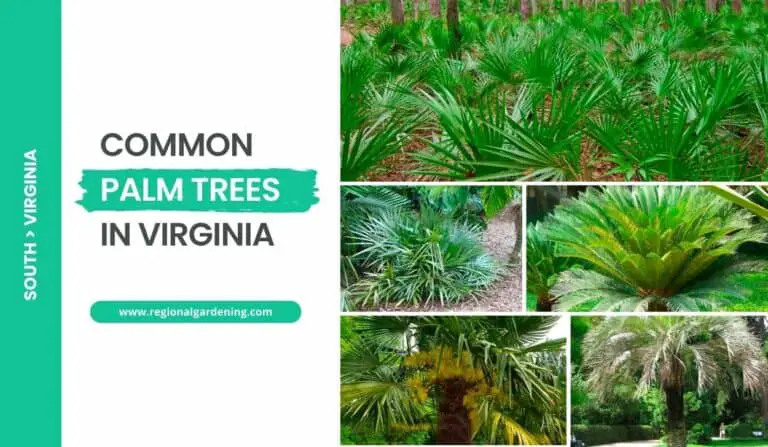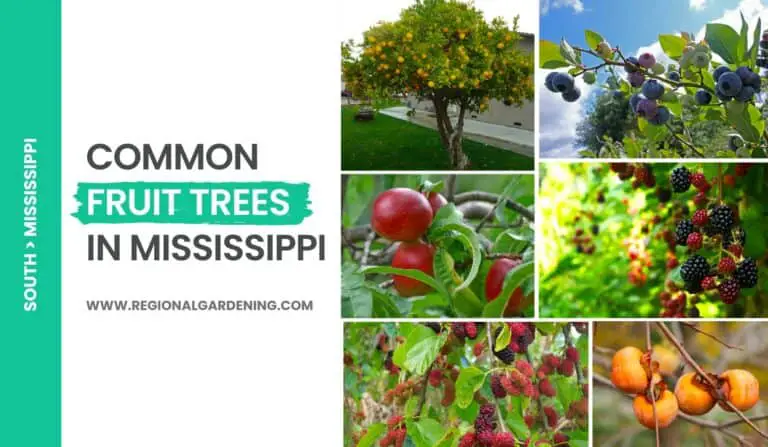4 Native Elm Trees In Georgia (Pictures & Identification)
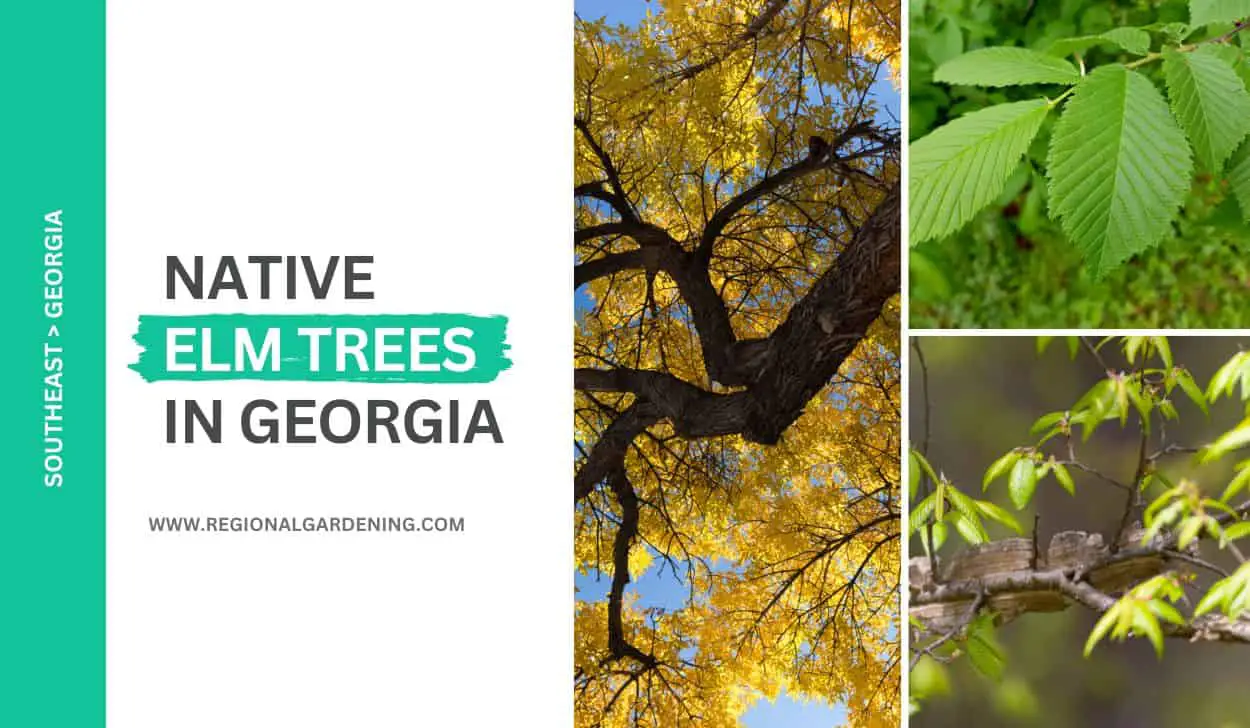
The Georgia landscape was once marked by the presence of majestic Elm trees that were a common sight. However, the Dutch elm fungus disease decimated a majority of the native Elm tree varieties, which drastically altered the scenery of the state.
Plant breeders and botanists have created numerous hybrid varieties of elm trees that are resistant to Dutch elm disease to some extent; however, the importance of native trees cannot be overstated.
In this article, I’ll introduce you to four native Elm trees in Georgia that were once the state’s dominant trees. While these trees can still be found in the state, they are not as common as the new Dutch Elm disease-resistant cultivars.
Let’s begin.
1. American Elm
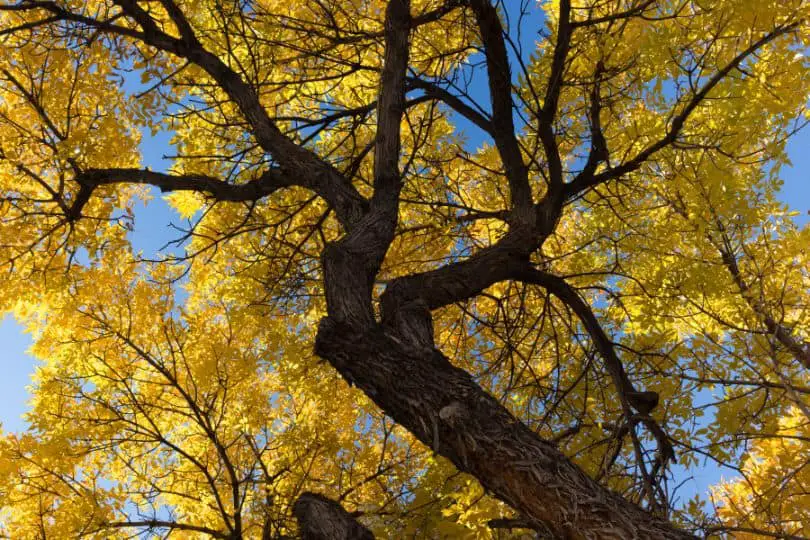
- Common Name: American Elm
- Scientific Name: Ulmus americana L.
- Mature Height: Up to 100 feet
- Native/Non-Native: Native to North America
- Flowers/Cones: Flat, winged fruit about 1/2 inch long
- Uses: Barrel hoops, veneer baskets, wheel hoops, furniture, woodenware
The American elms are the most common and tallest elm trees in Georgia. It is a deciduous tree that can reach heights of massive 100 feet!
Its leaves range in size from 4 to 6 inches long and 1 to 3 inches broad. They feature an oval form with a long, pointed tip. The leaf edges are coarse and double-toothed. The leaf’s base is lopsided. The leaf’s upper surface is dark green and might be smooth or somewhat rough. The underside of the leaf is light and hairy or smooth.
The American Elm’s bark is ashy gray and deeply split into broad ridges. The American Elm’s wood is fairly robust, hefty, strong, and highly tough. It has a coarse grain and is tough to split. The wood bends and steams effortlessly. It’s a light brown color.
The American Elm fruit is flat and winged. It measures around 1/2 inch in length and has hairy borders.
The American Elm is an extremely beneficial tree. Its wood is suitable for the production of barrel hoops, veneer baskets, wheel hoops, furniture, and woodenware.
It is generally found near streams on moist fertile soil. The tree is endemic to North America and can be found along the coast and in Piedmont. Additionally, it can also be found along streams in damp soil.
2. Slippery Elm
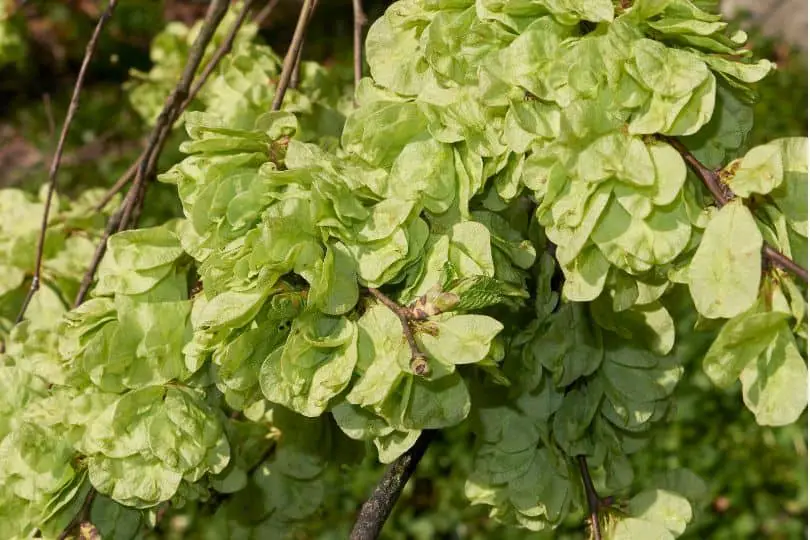
- Common Name: Slippery Elm
- Scientific Name: Ulmus rubra Muhl.
- Mature Height: 60 to 70 feet high
- Native/Non-Native: Native to North America
- Major Attraction: The fruit is round or wedge-shaped, flat, winged, and hairy.
- Uses: Fence posts, crossties, sills, wheel hubs, and agricultural implements.
The Slippery Elm is a lovely tree that grows on stream banks and low, rocky hillsides in deep, rich soils.
This tree is endemic to North America and can reach heights of 70 feet with a trunk diameter of 2 feet. The bark of the Slippery Elm is dark brown and separated by tiny cracks, with huge, thick scales covering it. This tree’s inner bark is mucilaginous, which means it has a sticky texture.
The elliptical leaves of the Slippery Elm are 5 to 7 inches long and 2 to 3 inches broad. The leaves are rounded and lopsided at the base and taper to a long point at the tip. The leaf’s upper surface is thick, dark green, and rough, while the underside is paler and hairy.
The winter buds of this tree are dark brown and hairy, as are the twigs.
Slippery Elm is used for a variety of applications. This tree’s wood is heavy, robust, strong, close-grained, and easy to split. Fence posts, crossties, sills, wheel hubs, and agricultural implements can all be made from it.
Additionally, the slippery elm inner bark can also be used medicinally to treat sore throats and unsettled stomachs.
3. Winged Elm
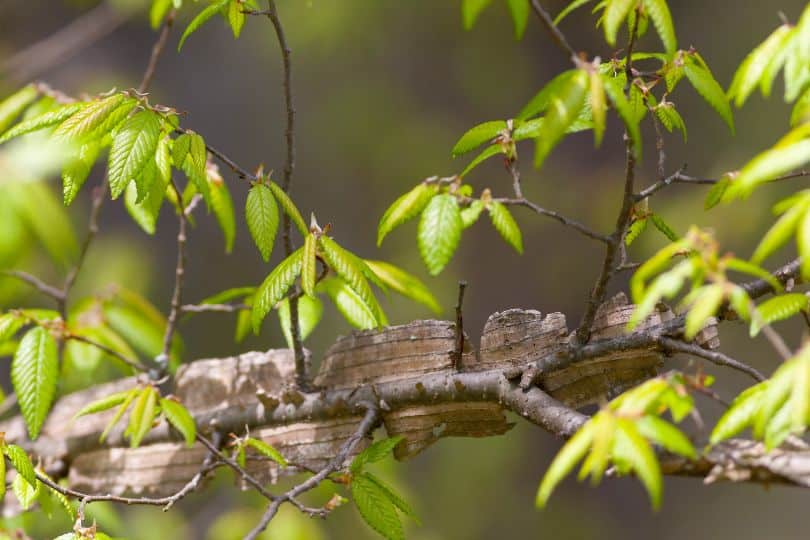
- Common Name: Winged Elm
- Scientific Name: Ulmus alata Michx.
- Mature Height: Usually 40 to 50 feet high
- Native/Non-Native: Native
- Flowers/Cones: Produces winged fruit
- Uses: Wood is used for wheel hubs, tool handles, and as an ornamental shade tree.
The Winged Elm trees are one of the medium-height elm trees in Georgia, reaching heights of 50 feet.
This tree’s leaves are deciduous and around 2 inches long and 1 inch wide, which is modest in comparison to other elm trees. They have toothed borders, are thick and dark green and smooth on top, and pale and soft-hairy on the bottom.
This tree’s fruit is oblong, 1/3 inch long, winged, hairy, and crimson. The fruit ripens before or after the leaves open.
The bark is light brown with a crimson tinge and is separated into shallow flat ridges. This tree’s branchlets are frequently adorned with two thin, corky wings about 1/2 inch broad.
The wood of the Winged Elm tree is heavy, strong, close-grained, and light brown. It is difficult to divide and not particularly strong. The wood is frequently utilized in the manufacture of wheel hubs and tool handles. Because of its lovely, round-topped head, this tree is frequently employed as an ornamental shade tree.
Winged Elm trees can be found growing on dry, gravelly uplands, less typically along the edges of wetlands and stream banks, and can be found across the state except in the high highlands.
4. September Elm
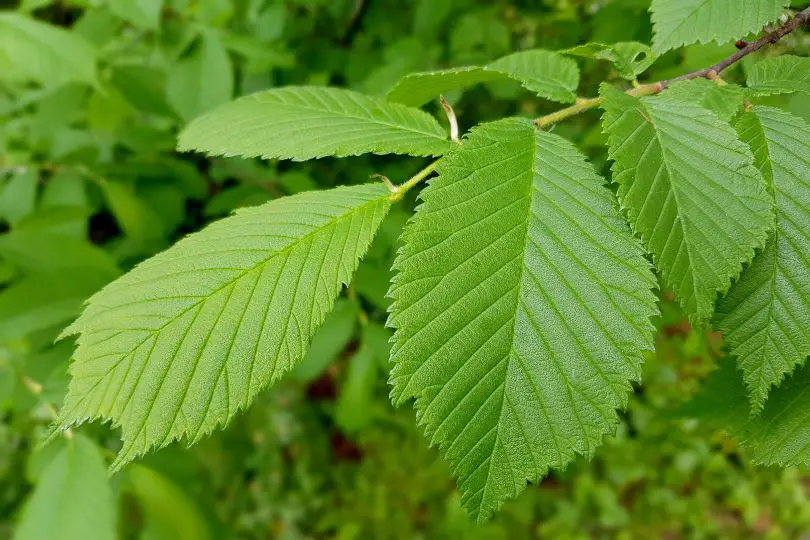
- Common name: September Elm
- Scientific name: Ulmus serotina
- Mature height: Up to 60 feet
- Native/Non-native: Native
- Major attraction: Excellent choice for landscaping and conservation efforts.
- Uses: Ecological benefits, wood is valued for its strong, durable wood, which has been used for furniture, flooring, and other construction materials.
The September Elm, commonly known as Ulmus serotina, is a Georgia native deciduous tree. It has a tall, narrow design and can reach a height of 60 feet. The tree’s bark is dark brown and highly furrowed, with interlacing ridges forming a characteristic diamond-shaped pattern.
The September Elm produces little, inconspicuous blossoms that are wind-pollinated in the spring. The flowers are not particularly showy and are sometimes obscured by the leaves.
In the fall, the tree releases little, flattened, winged seeds that are distributed by the wind. A papery membrane surrounds the seeds, allowing them to float in the air.
September Elm leaves are ovate and alternately placed on the branches. They have a sharp tip and a serrated edge. In the fall, the leaves become a vivid yellow, bringing a wonderful splash of color to the environment.
The September Elm prefers damp, well-drained soils in bottomland woods, riverbanks, and beside streams. It can also be found in highland locations but prefers moister conditions. Because of its ability to withstand flooding, the tree is a popular candidate for restoration and erosion control operations.
Aside from its ecological importance, the September Elm is renowned for its strong, durable wood, which has been used to make furniture, flooring, and other building components.
Similar Articles
- Native Oak Trees in Georgia
- Native Dogwood Trees In Georgia
- Native Pine Trees In Georgia
- Native Hickory Trees In Georgia
- Native Maple Trees In Georgia
- Native Tupelo Trees In Georgia
- Native Plum Trees In Georgia
- Native Magnolia Trees In Georgia
- Native Willow Trees In Georgia
- Native Ash Trees In Georgia
- Native Cottonwood Trees In Georgia
- Native Cedar Trees In Georgia
- Native Birch Trees In Georgia
- Common Purple Trees In Georgia
- Common Cypress Trees In Georgia
- Common White Flowering Trees In Georgia
Native Elm Trees In Georgia – Sources
The Regional Gardening team makes sure that the information in our articles is accurate by only using sources that are known to be trustworthy. Some of these sources are peer-reviewed journals from government agencies, well-known universities, and scientific research organizations.
- Georgia Native Plant Society
- College Of Agricultural & Environmental Sciences, University Of Georgia
- Native Plants Books, Georgia Native Plant Society
- Georgia Forestry Commission
- Native Plants Of North Georgia, University Of Georgia
- Tree Care, Georgia Tree Council


